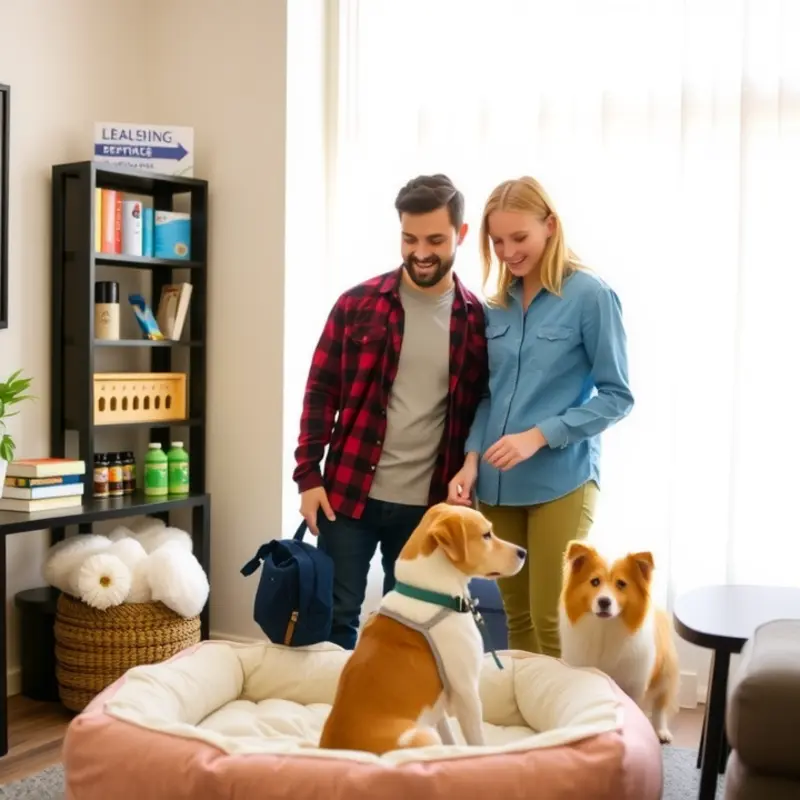Whether you’re a young professional, a first-time renter, or a cozy family looking for a new home, finding the perfect apartment often comes with some tail-wagging dilemmas. For many, pets are a part of the family, and having them in your new space can boost your happiness factor. But before you bring home that adorable puppy or lovable kitten, it’s essential to navigate the often murky waters of apartment pet policies. Each complex has its own set of rules, from breed restrictions to pet deposits. This guide aims to clarify what to look for when renting with pets, making it easier to find a space that suits you and your furry friends. Get ready to dive into a world filled with pet fees, size limitations, and a few amusing anecdotes – all to ensure your next move is a purr-fect fit!
Paws and Claws: Understanding Pet Policies

Navigating the world of apartment pet policies can feel daunting, but understanding the common restrictions and allowances helps you find the best home for you and your furry friends. Most pet policies delineate the types of animals allowed, often focusing on breed, size, and the number of pets per unit. These restrictions are crucial for apartment management to maintain safety and property standards.
Breed restrictions are a significant aspect of pet policies. Some breeds are often disallowed due to perceived aggression or size. Typical breeds facing these restrictions include Pit Bulls, Rottweilers, and Doberman Pinschers. It’s essential to know this ahead of time and find accommodations where your pet is welcome, ensuring their temperament and training are showcased positively during the application process.
Weight limits also play a part, with apartments often capping pets at around 20 to 50 pounds. However, an increasing number of communities recognize that a well-behaved, larger dog can coexist in an apartment setting. It’s wise to check any requirements for documentation or veterinary records that verify size and health.
Alongside these restrictions, financial considerations are integral. Expect to encounter pet deposits and monthly fees to offset potential damages. Pet deposits generally range between $200 to $500, refundable depending on the state of the property at the lease’s end. Additionally, a non-refundable pet fee and a monthly pet rent of around $25 to $50 per pet may apply.
Despite these fees and restrictions, the search for a truly pet-friendly apartment is not in vain. Many modern properties offer a range of amenities tailored for pets, enriching both your life and theirs. Dog parks, pet wash stations, and events for pet owners are just a few of the perks that cater specifically to your pets. These amenities are wonderful additions, fostering a community that considers pets as important residents.
For those seeking more extensive guidance on moving with pets and adjusting them to new environments, this article provides practical insights and preparation tips.
While managing apartment pet policies can be intricate, they need not be a deterrent. By understanding and anticipating fees, restrictions, and potential benefits, you can ensure that your search for the perfect apartment considers the happiness and well-being of your furry companions.
Lease Like a Pro: Negotiating Pet Agreements

Approaching your landlord to negotiate pet policies can feel daunting, yet with preparation, it becomes manageable. Here are actionable steps to make your case compelling, ensuring your pet’s inclusion in your new home.
First, understanding landlord concerns is crucial. Many worry about potential property damage, noise issues, and impact on other tenants. Address these anxieties directly to show your commitment to maintaining their property. A detailed pet resume can be invaluable here. Include your pet’s age, breed, and temperament, vaccination records, and any obedience training they’ve completed. Highlight their good behavior to reassure your landlord.
To formalize the arrangement, include clear pet clauses in your lease agreement. Specify the type and number of pets allowed, any sizes or breeds the landlord agrees to, and outline your responsibilities such as waste cleanup and pest control. An escalation clause can be added if you plan to bring in a new pet later, ensuring transparency and trust.
Pet references can be a golden ticket to a successful negotiation. If possible, obtain written references from previous landlords or neighbors who can vouch for your pet’s behavior and your diligence as a responsible pet owner. This documentary evidence bolsters your position, painting your pet in the best light possible.
Making your case also involves presenting yourself as a responsible tenant. Ensure that your credit check and rental history are clean – this builds your credibility. Landlords are more likely to accommodate your requests if they trust you to abide by all lease terms diligently.
Sometimes, offering a pet deposit or insurance can ease landlord concerns. This shows financial responsibility and willingness to mitigate potential risks. Some landlords may prefer monthly pet fees, so be prepared to discuss both options and find a solution that suits both parties.
You might need to demonstrate how your pet will fit into the living environment without causing disruption. Explain how you will manage noise levels and ensure they are controlled if your pet will be home alone. This could include investing in soundproofing or scheduling regular walks for energy-burning exercise. For tips on managing apartment life with pets, particularly in ensuring comfort as they age, check out this guide on apartment living with elderly pets.
Finally, during your negotiation, maintain a positive tone and remain open to compromise. If your landlord is skeptical, suggest a trial period where they can assess the arrangement’s success. This shows you’re willing to work collaboratively to find a solution that ensures your pet’s happiness and the property’s integrity.
In conclusion, negotiating pet agreements requires preparatory work and clear communication. By addressing landlord concerns, providing thorough documentation, and demonstrating responsibility, you create a compelling argument for why your pet will be an excellent addition to the household, couch-chewing tendencies notwithstanding.
Final words
Finding a pet-friendly apartment doesn’t have to feel like a game of hide-and-seek. With the right knowledge and approach, you can uncover policies that align with your lifestyle. Always remember to ask questions, understand your rights as a tenant with pets, and don’t hesitate to negotiate. After all, a happy pet means a happy home. So, leash up and get ready to discover a space where both you and your furry companions can thrive in harmony. Happy renting!









